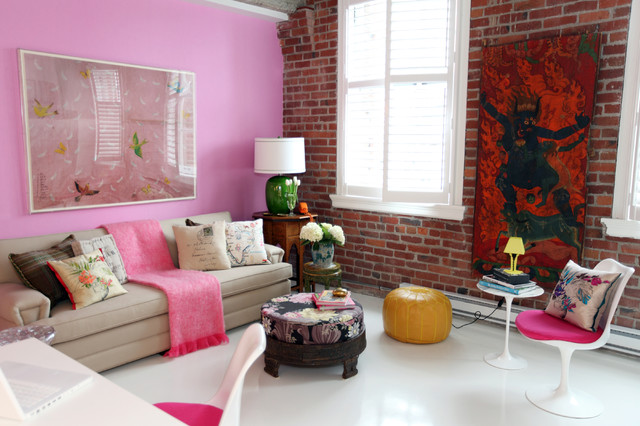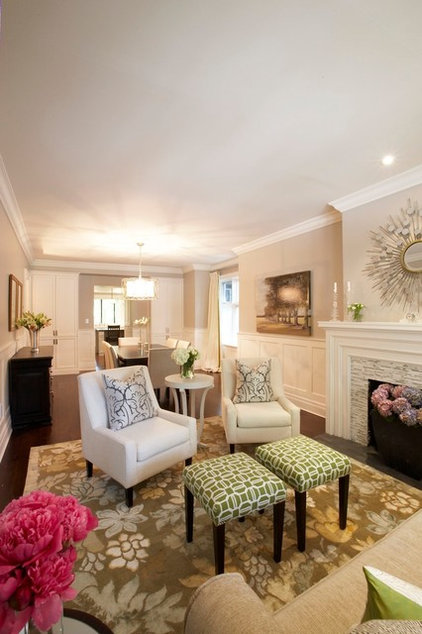How to Plan a Just-Right Living Room Layout
|
|
|
Planning. Analyze the way you spend time in your living room. Nashville interior designer Kippie Leland
suggests writing down everything that you plan to do there. "This will
help you prioritize when you reach the furniture planning stage," says
Leland.
Then think about traffic and conversation flow. How do you enter a room? Move between chairs? Get around the corner of a sofa? "You never want to feel trapped or feel as though you're making laps around a room to get in or out," says Minneapolis interior designer Lucy Penfield. And "don't locate the back of a sofa by the entry," says Colorado interior designer Andrea Schumacher. "It should be set up so one can walk in and out of the room easily." Don't leave too much space between seating, so conversation can flow easily. |
|
Arranging and rearranging. Everyone
has an individual preference when it comes to arranging furniture. Some
people like to take their time and plan out every detail. For those,
Leland suggests starting off with a scaled drawing of the space,
measuring the existing furniture and making to-scale cutouts of each
piece to play with. "It's much easier on your back to rearrange on paper
than to physically move the furniture," she says.
There's a different route for those who prefer to be spontaneous. "Block out a good hour or so, bring a friend along or your family, and really move things around," says Penfield. Move out everything that's easy to carry first, just to get a new view of the room. Then switch it all up — even take out the rug to see what the room looks like without it. "Each time you come up with a new configuration, take a moment to sit down and see how it feels," she says. A few things to keep in mind, no matter what arrangement you decide on:
|
Just because the size and scale of a piece looks right in a store doesn't mean it'll feel right in your living room. Larger rooms require larger furniture, and smaller rooms require a smaller scale.
But above all else, make sure whatever you buy is comfortable too. "Select furniture that fits you," says Schumacher. "Try out different sized pieces. We've found some people prefer larger furniture they can curl up in, and some people prefer more petite furniture."
|
Buying furniture. A new
living room usually means some new furniture — at least a piece here and
there. Jaffe suggests choosing the sofa first, since it tends to be the
largest piece in the room. "When buying a sofa, go moderate in size,
for it might be used in a future house in the den or library," adds
Leland.
Consider your entertaining needs and choose furniture that can be used with larger groups if necessary. Slip a bench under a roomy console for extra seating or find ottomans that can be used as side tables or seating. |
|
by Dana Nichols
by Dana Nichols
|
|
Dealing with the TV. The
TV isn't necessarily pretty, but for many of us, it's a must-have in the
living room. Luckily, flat-screen televisions lessen the design
dilemma. Keep comfort in mind when placing your TV
— make sure not to hang it at a height that'll make your neck ache.
Above the fireplace can be too high, unless the couch has enough
distance so your neck doesn't have to strain. However, Jaffe advises not
to put the TV more than 10 feet or less than 6 feet away from the sofa.
You might not want your TV to become the room's focal point (no matter how proud of it you are). "Do you want a black hole hanging in an important visual place in the room?" says Leland. Try putting it on a bookshelf that flanks the fireplace or on a buffet against the wall. |




